
If you’re interested in an online supplement for K-8 math that goes beyond the typical drill, is engaging and has a strong problem solving component, ST Math may be just the right solution for you.
What We Like
But watch out for…
What is ST Math?
Created by the MIND Research Institute, ST Math is an online supplemental learning platform designed to help students hone their understanding and ability in math.
To do so, the program uses a highly visual, game-like environment where students receive focused math practice by solving highly interactive, colorful puzzles with the help of a variety of on-screen manipulatives and digital tools.
What Ages Or Grades Is ST Math Intended For?
ST Math is aimed at pre-K – 8 students and is Common Core and state standards aligned, covering everything from basic shapes and patterns to operations with integers and rational numbers, linear equations and quadratic functions.
Although the program is divided up by grade level, ST Math allows parents to freely switch between them.
Families can work through the program at their own pace or completely customize the topics their students are asked to work on by pulling assignments from different grades.

This flexibility of use can actually make ST Math quite effective as a homeschooling math supplement, as it can act as a suitable reinforcement activity for whatever main math curriculum they are using, regardless of how advanced it is or whether it is standards-aligned or not.
It also means that the program can be a particularly good option for students learning outside of a traditional grade progression, with precocious students and those who are a bit behind in their studies both being able to freely access the materials they require.
That said, homeschooling families should be aware that, as ST Math is Common Core aligned, its in-built scope and sequence may not align perfectly with certain homeschool math curricula and so they may have to hunt around a bit to find certain topics.
Look and Feel Of ST Math
ST Math can be divided up into two distinct components – the student account and the educator (teacher/parent) dashboard.
Student Account
By and large, the program is pretty simple and intuitive for students to use.
Unlike many other online learning platforms we’ve seen, students using ST Math aren’t faced with a traditional student dashboard.
Instead, their screen looks much like a cartoon world or a side-scrolling game.
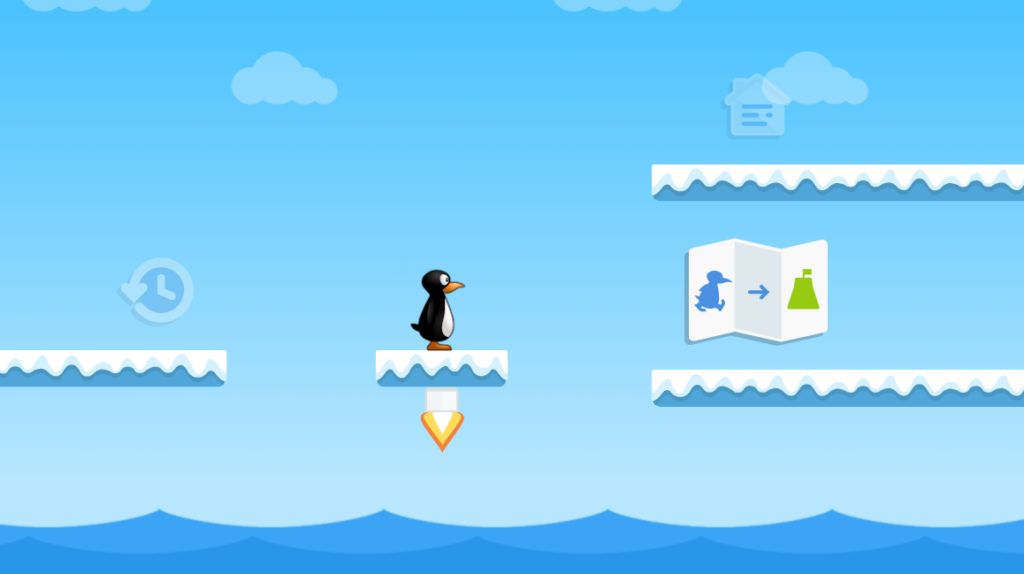
The program centers around JiJi, a cute cartoon penguin, and students click on on-screen elements (labeled buttons, generally) to guide JiJi to different “objectives,” i.e. the different learning activities and puzzles.
The program’s overall look is quite appealing, as well.
It uses bright, cartoon graphics, which can be helpful in keeping students engaged and interested in the program, and the animations are quite smooth and fun to look at, with JiJi running, walking, or even rocketing around to new locations.
Despite being game-like, the screen itself is never really cluttered with irrelevant drawings or animations.
This can go a long way in preventing unwanted distractions and can be very helpful for students who have had a hard time staying focused with other online learning programs in the past.
Interestingly, ST Math also makes use of helpful math manipulatives and tools to help students complete puzzles, such as compasses, rulers, number lines, protractors, counting blocks and more, which can often be interacted with in real time.
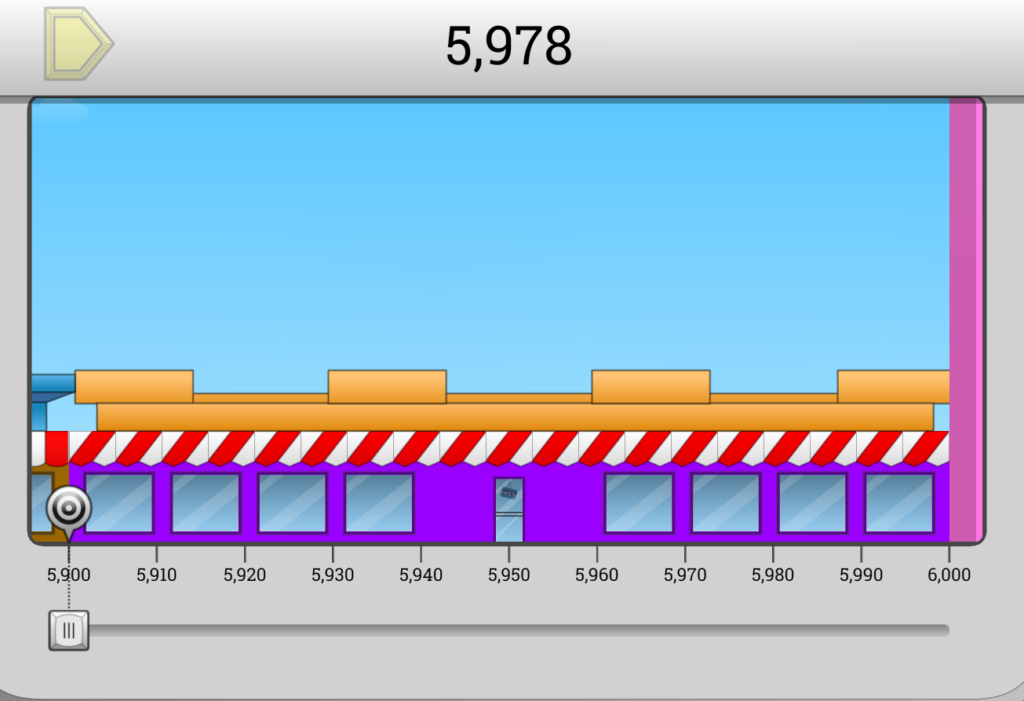
Students can, depending on the puzzle, twist, rotate, turn, drag and pull on the objects on the screen, all of which can help make learning more interactive and prevent students from passively zoning out.
One thing we particularly liked is that ST Math provides students with little tutorial games that are not math related but are instead designed to help students learn to use the games touch system and layout effectively, which is quite thoughtful and can help them stay focused on the math, rather than the controls.
One thing parents should be aware of is that, while the student-facing visuals are very colorful and interesting to look at for students in early elementary, their style may be a little too simple and cartoon-y for some students in the upper grades and middle school, who may be used to more sophisticated 3D graphics from their video games.
Educator Dashboard
Much like the student account, ST Math’s educator dashboard is pretty clean and user-friendly.
The program uses a good deal of white space, so there isn’t much to distract parents or clutter up the screen.
The home page of the dashboard gives a quick snapshot of how a student is using the program, providing information on how many puzzles they’ve done and how much time they’ve spent practicing so far.

Exploring and assigning lessons and work for students, meanwhile, is as simple as clicking one of three navigational icons at the top of the screen (the rather straightforwardly labeled Curriculum one) and then selecting math activities based on grade, standards or topic.
The program provides a good deal of help for parents, as well, explaining the purpose of each puzzle, as well as explaining how the activity relates to underlying math concepts and learning objectives.

Further, ST Math offers a lot of resources and suggestions that can be used to help integrate the program into homeschooling lessons, as well as for supporting students and troubleshooting problems, which we always appreciate.
Finally, as a digital program, parents are also given a good set of progress tracking tools to make sure students are actually doing their work and learning.
Clicking on the student’s name, parents can get detailed information on student performance and productivity over time, how often they are using the program,
The tools present student data in a pretty easy to read format, using line bars and graphs to inform parents what games students are playing, how much time they are spending on the program, how many attempts they are taking per level, their grades and scores on any quizzes, where they have attained mastery (and in which topics they still need improvement) and so on.

As a result, parents can get a fairly intuitive sense of how their student is doing at a glance, which can be helpful for those who have little time to do a deep dive.
Approach To Math Instruction and Practice
Mastery
As a supplementary resource, ST Math takes a mastery approach to skill practice.
In other words, students work on one skill and topic at a time, diving deeper and deeper into it as they progress through each objective’s levels and puzzles and only moving on to a new objective when they reach a level of proficiency (“mastery”), which in this case is 100%.
Once mastery is achieved students then move on completely and generally won’t spend time on the same skill sets in later grades.
This is as opposed to other, more spiral-style supplements, that might have students work on topics a little at a time, introducing new topics periodically, and circling back to previous topics in greater depth in later exercises.
A mastery approach to practice can have its benefits.
It allows students to spend more time honing their skills in a particular area, letting them dive more deeply into and explore concepts than traditional spiral methods tend to allow.
Further, by only letting them move on when a standard of proficiency is met, it can help prevent students from progressing despite having significant knowledge or skill gaps in a given area.
On the other hand, it is important to note that mastery isn’t always ideal for every student.
Some students may get frustrated doing puzzle after puzzle and level after level in a single topic and may prefer an approach that changes things up a bit over time.
Similarly, some students may become stuck and frustrated by the 100% puzzle completion requirement.
Game-based Practice
Although it is a math supplement, ST Math does not involve the typical assortment of math workbooks.
Instead, ST Math relies on game-based learning.
In the program, students are presented with little mini-games or puzzles that they have to solve by applying specific math skills they have learned in their math lessons.
As an example, students practicing doing operations with exponents can do so by playing around with an equation, which in turn expands or contracts branching geometric designs to match a model that appears on screen.
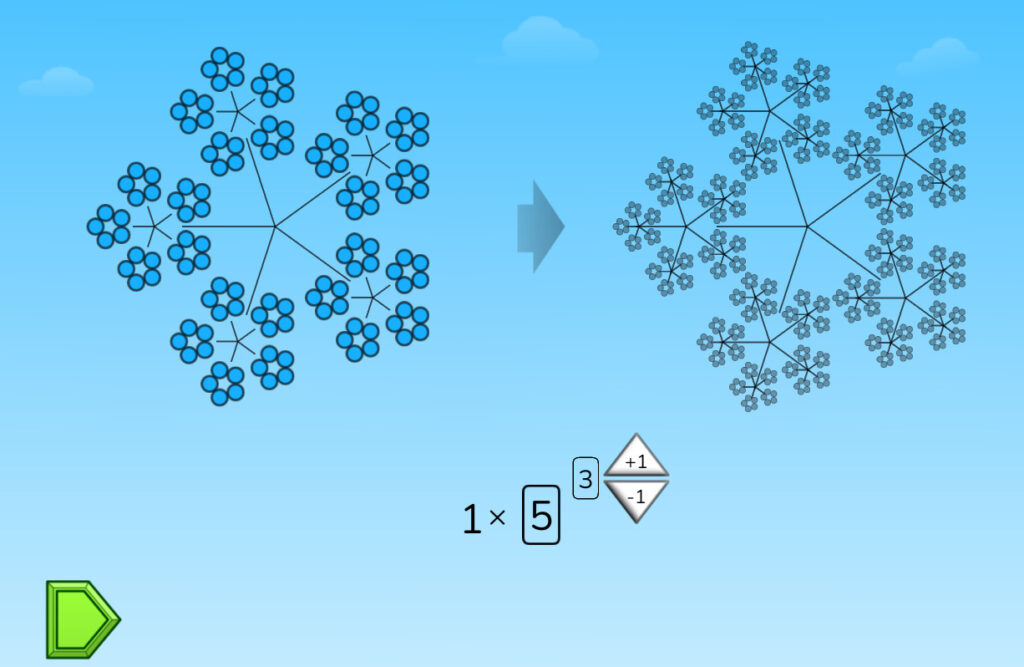
When they’ve figured out the right exponent and its representation, the geometric design should match and disappear, allowing JiJi the penguin to run unimpeded across the screen.
This integration of puzzles into practice allows students to work on and hone their skills and deepen their understanding of math concepts in a more dynamic and often less intimidating way than with traditional drill and memorization methods.
It also forces students to constantly interact with and engage with what is presented on the screen, which in turn means that students can’t really tune out as much as they might otherwise.
It is, however, important to note that ST Math is really a game-like environment and not a gamified learning platform.
That is, it uses games and puzzles to help students practice, but is not itself a video game.
It doesn’t, for example, really make use of video game elements like avatars, coins or tokens, casual minigames, rewards, high-scores or customizable playhouses that students can decorate.
Whether this is an advantage or disadvantage really depends on the student.
For many homeschooling families it can be a preferable way of learning, as it means that ST Math sticks to the learning and is a lot less distracting to students.
There is less of a risk, for example, of students wandering off and spending an hour customizing a virtual room.
It also avoids using in-built currency and other exchange-based virtual rewards that some parents might be uncomfortable with.
Some students, however, may find its focus on learning a little more boring and school-like than other, more entertaining online learning games out there.
Productive Struggle and Conceptual Understanding
Another way in which ST Math differs from other practice programs out there is in its use of what educator’s refer to as productive struggle.
In other words, the program focuses more on the process of problem solving and getting students to work through problems themselves.
To do this, ST Math’s offers students access to a wide range of interactive, game like puzzles – around 35,000+ at time of writing – each of which focuses on a specific skill in math.
What ST Math does not provide, however, is much in the way of on-screen audio instructions telling the student what they need to do.
Instead, students are faced with a screen containing some kind of obstacle that they will need to clear by using some kind of math concept, and students are left to figure out exactly what they will need to do in order to solve things.

Students are rewarded for reasoning through what a problem wants from them, thinking the process through logically and coming up with different strategies to attack a problem in a way that makes sense and fits with the overall math theme.
In this way, students are forced to engage their visual reasoning, creative and critical thinking skills in a much deeper way in order to progress, something that most typical math workbooks can’t really provide.
In the long run, this approach can also get students more comfortable with and less intimidated by unusual or novel problems in math as they will be more used to reasoning their way through problems and challenges.
With that said, the lack of specific and direct instruction for each puzzle can wear on some students after a while, which can lead them to becoming frustrated and disengaging from the game over time if parents aren’t careful.
Visual, Spatial and Temporal Learning
Rather than just simply providing students with various math problems to solve, as many other math games do, ST Math integrates a lot of visuals and what it refers to as “Spatial and Temporal” elements (the ST in ST Math).
Taking place in a very colorful, cartoon world, students solve puzzles in ST Math not by typing in answers to equations but by moving, transforming and manipulating digital items and manipulatives that appear on-screen.
Students, for example, may fill beakers full of water, rotate counting blocks to create a bridge, rotate fractal representations of exponents, pull on number line bars to drag it to its destination, zoom in and out of depth and more.

Through these manipulations, students can actually reinforce their spatial reasoning skills alongside their math skills, which is kind of interesting.
It is only after students are comfortable with concepts visually and spatially that they work with more abstract representations, such as written equations.
This approach to learning is somewhat similar to those such as the Singapore method’s CPA approach (as seen in programs like Singapore Math or Math in Focus).
That is, ST Math recognizes the challenges younger students may have with abstraction and starts them off with something they can more intuitively understand (visual models and manipulatives) before working with formal equations and notation.
The program does have some differences from other approaches we’ve seen, notably in that it doesn’t require a lot of written or oral instruction, which leads it to being more “hands-on” (as far as its digital format will allow) and exploratory and allows it to integrate more problem solving and spatial reasoning.
How It Works
ST Math is a pretty straightforward online math supplement.
Parents begin by setting up an account for themselves.
Logging into the Educator dashboard, parents can then create student accounts, assign learning, monitor student productivity, review lesson objectives, set assignments and even try their hand at some of the game’s puzzles.
Once their account is created, students can then log in to their own account.
As we’ve mentioned there is no real dashboard for students, as ST Math uses a video-game like screen with pictorial representation of program options and settings that JiJi the penguin will move through with a click of the mouse or tap on the screen.
Broadly speaking, ST Math is broken down into a few different components:
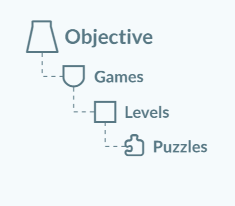
Each broad math topic in a grade is referred to as an objective, and each objective has a number of different games associated with it.
Each puzzle is then made up of a number of levels, which can contain a series of puzzle screens.
Prior to starting any new objective, students are given a multiple choice style pre-quiz, which is used to assess a student’s readiness and existing knowledge of a topic.
After completing this quiz, JiJi the penguin will wander into a stage and begin a game.
Although each game is different, they usually involve a student working with some on-screen manipulatives, objects or tools, pushing/turning/dragging them into place (or working with equations in later grades) to solve a puzzle and allow JiJi to be able to move across the screen once a green “ready” arrow button is pushed.
Each game works on its underlying math skills in a systematic and sequential manner, starting with the basics of a concept and progressively becoming more challenging as the levels progress.
As we’ve noted, the games don’t provide any instructions and it is up to students to figure out exactly what they need to do in order to solve the puzzle and how to go about doing it, so there can be a fair amount of strategizing and trial and error,
In order to make sure students take things seriously, JiJi is also given a couple “lives” that represent possible attempts on a puzzle – run out of lives and students have to start again, much like any other video game.

Interestingly, students can either work through ST Math in a sequential manner or be assigned topics to work on by a parent, which can add a little more flexibility in terms of fitting the program to a particular curriculum or scope and sequence.
At the end of each objective, students can be assigned a summary quiz and at the end of each grade there is the option for parents to assign bonus content, such as more challenging games that extend student learning.
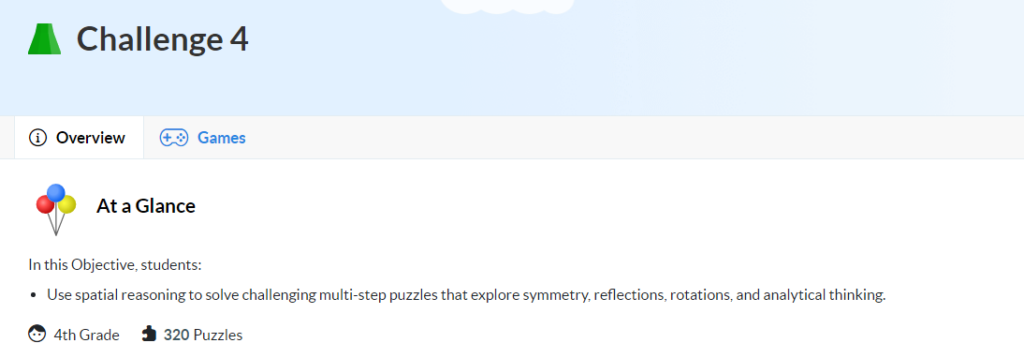
There is also the option to include dedicated math facts practice, which can be a good option for homeschools following a more procedural or traditional math curriculum such as Saxon or Abeka Math.
Our Thoughts on ST Math Practice
Overall, we found ST Math to be very interesting, novel and possibly a very effective way for homeschoolers to hone their math skills.
In particular, the game-based nature of program offers students a way of practicing their math concepts and understanding without the need for a lot of memorization and drill, which more often than not tend to be students’ least favorite part of learning math.
ST Math also offers a large number of diverse games and puzzles for students to try, well over 30, 000 in total, each of which is focused on providing practice on specific topics in math.
By and large, we found these puzzles to be fun and short enough that they don’t really seem to drag on, something that can be helpful for students who don’t exactly love doing math work.
Additionally, we found the lack of direct instruction in puzzles to be very interesting and refreshing as it encourages students to define problems, set strategies and experiment with math – all of which are skills that become very important when dealing with higher level math later on.
The lack of direct language instruction also makes ST Math more accessible for students, particularly those for whom English is a second language, younger students who are still learning to read and those with processing difficulties.
Finally, because of the centralized, all-access, online nature of the program, we feel that ST Math can be a very flexible supplement for homeschooling families, allowing parents to select what they want their child to work on.
This means it can work well with a variety of different homeschooling math curricula, whether or not they are standards-aligned, on-grade or conceptual in nature.
On the downside, we recognize that the lack of instruction in each puzzle can, eventually, become a little frustrating for some students, which can cause them to disengage from the program if parents don’t intervene and help out.
Further, although we enjoyed the graphic cartoon nature of the program in general, some of the animations did have a tendency to drag on a bit, on occasion running for longer than the problem itself took to solve.
In a similar vein, each game can have a number of levels and puzzles that students will have to go through sequentially, often using the same or similar style and mechanics.
Although this certainly can help reinforce a student’s skill and conceptual understanding for a topic, it can sometimes feel a bit repetitive, especially for those who pick things up quickly.
Pros and Cons of ST Math
Pros
Colorful, game-like environment is highly engaging
ST Math is based around a game environment filled with interesting and interactive cartoon elements, bright colors and animations, all of which can make it far more interesting to looking at yet another math workbook.
Offers standards-aligned practice
ST Math is fully aligned with Common Core and state standards for math, and even allows parents to assign specific puzzles based on these standards.
Puzzles and games can be more fun than traditional workbook drill
The puzzles ST Math provides can be quite interactive and dynamic, allowing students to freely and directly manipulate objects, numbers and tools on their screen in order to get JiJi to its destination.
This means the program can be a lot more interesting and even fun to work with compared to a traditional math workbook.
Highly flexible option for homeschools
Although designed for the Common Core, ST Math provides parents and students with access to all grade levels and allows parents to pick and choose topics from any of these.
Further, the program also has a variety of enrichment options and dedicated math facts practice.
This can allow homeschooling parents to really customize the learning and use ST Math alongside a variety of math curriculum types.
Intuitive and comprehensive progress tracking for parents
As an online program, ST Math is able to (and does) provide parents with a full suite of progress tracking tools that help them keep tabs on what their student is working on, how well they are doing, what they are learning, what they are having trouble with and more.
More than that, more complex trend information is usually presented in simple and intuitive graphs and bars that can make things quick and easy to read at a glance.
Easy to use
From its clean and simple student screen and intuitive educator dashboard to its easy to read progress tracking, ST Math is quite user-friendly and straightforward to use.
Games encourage the use of creative thinking and reasoning skills
By providing students with math-based puzzles but not giving them detailed instructions on what to do, students have to learn to analyze, assess, reason and experiment their way through a math problem, higher order math skills that can serve them will in their future STEM studies.
Much more focused and less distracting than other options
Although it includes a lot of games and puzzles to help students practice math, ST Math tends to keep its learning environment fairly simple and focused on the puzzles at hand, avoiding the typical rewards, animations, tangential mini-games, scoreboards, customization options and more that can distract and lead students astray.
Cons
Graphics not the most advanced and cool for older students
Although ST Math’s cartoon environment is quite bright and colorful, and while we certainly think that JiJi the penguin is very cute and interesting to watch, older students who have been raised on more sophisticated video game options may find it a bit too cartoonish for their tastes.
Animations can drag on at times
A game-based learning program, ST Math does involve quite a few loading screens adn animated cutscenes between puzzles and games, which more impatient students may get tired of after some time.
Who is ST Math Ideal For?
Students who hate rote memory work and drill
Some students absolutely hate doing math drill and memory work.
Finding it repetitive and boring, they may turn off math practice altogether.
By weaving math problems into interactive, sometimes head-scratching digital puzzles and challenges, ST Math can make practicing math skills a lot less boring and intimidating for such students.
Homeschool families looking for a fun, effective and engaging supplement for math
Many of the games and activities that ST Math incorporates into its practice can be a lot of fun, having students pull, stretch, turn, twist and otherwise manipulate objects on their screen in order to solve math problems and clear a pathway for JiJi the penguin.
All this can make math learning a lot more fun and engaging for all involved.
Those looking for Common Core aligned math practice
Used by public and private schools across the US, ST Math is fully Common Core aligned and meets state standards for math education, making it an ideal practice resource for families interested in standards-alignment.
Those interested in a math supplement that get kids thinking critically
ST Math doesn’t offer students a lot in the way of instructions, leaving them to figure out how to approach math puzzles on their own.
Consequently, in addition to math practice, students will receive a good deal of practice in reasoning, creative and critical thinking.
Fans of math puzzles and challenges
Finally, ST Math contains well over 35 000 fully interactive and animated math games and challenges covering a ton of math topics, making it a great resource for fans of math puzzles.
Who Is It Not Ideal For?
Those looking for a full online curriculum in math
ST Math is not a full math curriculum.
Although it offers a deal of practice across the full range of K-8 math topics and has pre- and post-learning quizzes, it does not contain much in the way of math instruction and so needs to be used alongside a main math curriculum.
Students who favor quick and to the point workbook practice
While some students may be fans of math games and puzzles, others may prefer the quick and to the point do-X-to-solve-Y exercises and practice drills of traditional math workbooks.
Such students may become frustrated by the more open-ended puzzles offered by the program, as well as the various animations and loading screens digital learning entails.
Price
⭐ Free trial available for homeschools
Note: Prices correct as of writing, all prices in USD.
To the credit of the MIND Research Institute, over the last couple of years ST Math has been offered free to homeschools due to disruptions in education that have seen more students learning from home.
That said, prior to this the program cost around $120-130 per year per student.
While we will have to wait and see what the price of the program may be once its free access ends, we can use this price as a rough guide.
As always, we recommend parents check for the program’s current price, as well as for any discounts that may be on offer.
Is ST Math Worth It?
Ultimately, we feel that ST Math can be a very unique resource for students learning math at home.
The program offers an in-depth and comprehensive way of practicing math in a highly focused manner that is standards-aligned yet flexible enough to be used by homeschools of all kinds.
ST Math also stands out as an engaging, highly visual game-based learning environment that stays focused on the learning, avoiding the many distracting awards and animations that too many online programs tend to use.
Further, its visual, spatial and temporal method of instruction gives students a more “hands-on” way of understanding math concepts, allowing them to more freely explore and experiment with math and math tools.
But perhaps more than that, the program’s lack of excessive instruction not only makes the program accessible to younger and ESL students, as well as those with with reading and comprehension difficulties, but it also forces students through a higher level of problem solving where they have to define, strategize and solve problems on their own.
In this way, the program can exercise a student’s reasoning and critical thinking abilities (as well as their math skills) in a way few others manage to do.
Bottom Line
If you’re interested in an online supplement for K-8 math that goes beyond the typical drill, is engaging, fun to look at and has a strong problem solving component, ST Math may be just the right solution for you.

About the Author
David Belenky is a freelance writer, former science and math tutor and a tech enthusiast. When he’s not writing about educational tech, he likes to chill out with his family and dog at home.
